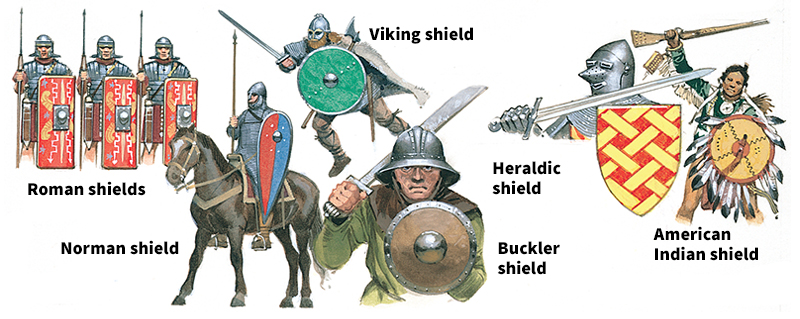Shield was the chief means of personal protection in war from earliest times until the invention of firearms during the 1300’s. Shields were carried in one hand or on the arm to ward off enemy blows. The other hand was free to use a club, sword, or spear.
The earliest shields were made of bullhide or wood. Some were covered with metal. They were of many sizes and shapes. The ancient Egyptians had large shields that were often oblong in shape with a curved top. Sumerian and Assyrian shields were round. The ancient Greek soldier carried a heavy round or oval shield. The Romans introduced a rectangular curved shield made of leather-covered wood.
During the Middle Ages, armored knights used a small triangular shield. After helmets covering the face were introduced, a knight was recognized by the coat of arms painted on his shield. Foot soldiers carried a small round shield called a buckler. Archers reloaded their bows behind a pavise, a large shield set on the ground. In the 1300’s, knights began wearing plate armor consisting of large pieces of steel, and they no longer needed shields. Shields were also discarded because they offered little protection against guns.

Shields have special uses today. For example, police officers sometimes carry shields made of synthetic materials as protection during riots.
